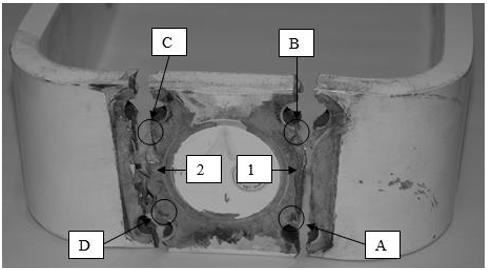
One of the most severe failures in an aircraft provided with turboprops is an airscrew blade loss, this article is focused on the response of the structure after the break of a blade. The effects of stiffness and strength changes on the mounting system are analyzed. The research covers different parameters which can influence the phenomenon. The FEM model is suitable to simulate blade loss collapse sequence. The model has a perfectly-plastic material law and detects damage zones and failures…..Read more


